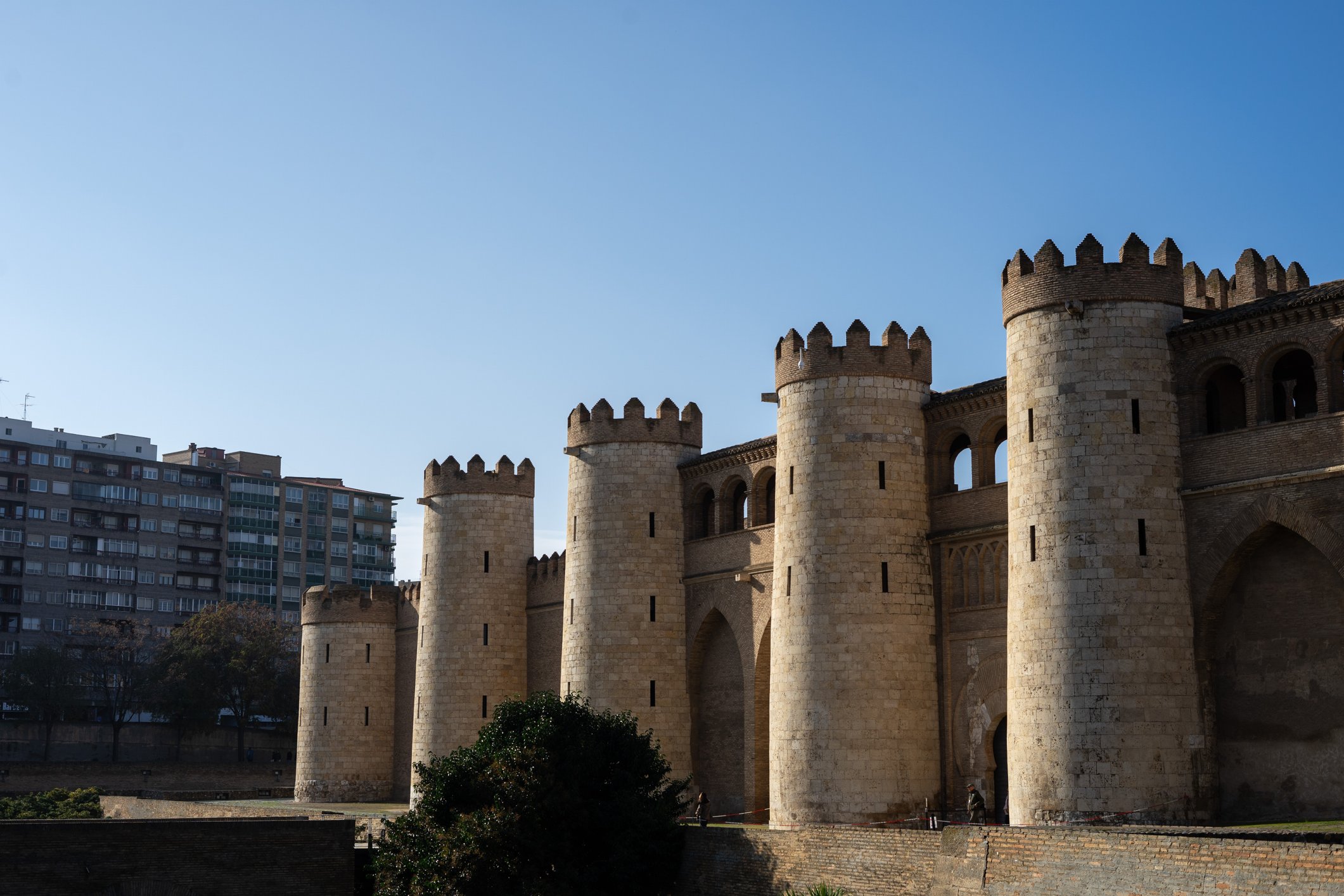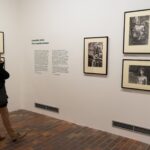Spain, Aragon and Zaragoza were places which I had always avoided. It was due to my notion about Spaniards from my educational exchange. The Spaniards whom I met there were a closed group which refused to speak English and mingle with other nationalities. That was the reason I hadn’t wanted to visit a country where I couldn’t find out anything about local people.
My second notion was that they are disorganized as well as it is a place where trains have a siesta from 14:00 to 17:00 and everything is delayed. Are these notions based of facts of fiction?
There is a link to a map with all points of interest written about at the end of the article.
Immerse in a series of 6 articles about Spain:
- Spain, Barcelona and San Cugat (1),
- Zaragoza (Aragon), thieves and high-speed trains (this article),
- Girona, Montserrat and a grilled pigeon (3),
- Spanish cuisine and overall impressions about Spain (4),
- Spanish pronunciation and dictionary (5),
- Spaniards, Catalans, integration of foreigners and capitalism (6).
If there isn’t a link to the article yet, it means the article hasn’t been published yet. Wait for a while please.
This is 2nd of 6 articles. You will find out information about Zaragoza which is the capital of the autonomous region Aragon. There is also information about thieves and how they steal a lot in Spain. This is relevant for each of you. There is a paragraph about siesta and why it exists. There is also a paragraph about high-speed trains and how it would be amazing if the whole Europe would be connected by them at the end of the article.
Zaragoza (Aragon)
Zaragoza is the capital of the autonomous region Aragon. Aragon was a part of the Kingdom of Aragon in the medieval. The city was established by the Romans. Caesar Augustus established it and named Caesaraugusta. The city was defeated by the Muslims in 8th century and was under their rule until 1118.
Thanks to the aforementioned history, the city has interesting architecture which blends Roman, Arabic and Christian elements together.





















The magnificence of Roman architecture can be seen in the city centre. There are remains of Roman fortifications with a statue of Augustus. It is also possible to visit 4 museums related to this historical period:
- (Harbour) Museo del Puerto Fluvial de Caesaragusta,
- (Forum) Museo del Foro de Caesaraugusta,
- (Spa) Museo de las Termas Públicas de Caesaragusta,
- (Theatre) Museo del Teatro de Caesaraugusta.



Siesta and opening hours
You can visit all four museums with one ticket. However, pay attention to the opening hours. I didn’t visit them because I was there on Sunday. When I reached them, it had already been too late and they were closed.
Museum and restaurants are usually closed for a specific time period in the afternoon. Not all of them are closed during the period of time. Especially those which cater to tourists.
The name for this custom is a siesta. It is an afternoon rest/relaxation. It originates from the need of hiding from extreme temperatures during the day in southern countries. It usually takes place from 14:00 to 17:00. The working hours don’t end after 17:00. Spaniards go to work again.
The opening hours of museums follows the custom. Museums are usually open from 10:00 to 14:00. Then employees have the siesta. Afterwards they work from 17:00 until 21:00. The opening hours differ during the weekend. They are shorter. Most museums are closed on Monday.
Back to Zaragoza
A good example of Arabic architecture is a fortress Palacio de la Aljafería, which you pass when you walk from the main train station Estación de tren Zaragoza-Delicias to the city centre.






Characteristic features of Arabic architecture are repeating and symmetric patterns. It is possible to see such patterns on the walls of the fortress. It is possible to see them in the museum part of the fortress as well.



A local parliament is located in the fortress nowadays. However, the fortress was a royal residence, a Spanish Inquisition prison and barracks.


There is a courtyard in the centre of the fortress where orange trees grow. Oranges fall of them on the ground. There is big signboard saying: “Do not enter”. I was really fascinated by them (the oranges). I wanted to eat them. So, I went to a guard standing nearby and asked if I could take one of them. “Better to preserve them in my hands than let them rot.” That’s what I told myself. The answer was: “No!” which was quite clear even without a dictionary.





I had seen so many chapels, churches, temples, mosques, monasteries, fire temples and modern buildings used for worshipping anything deemed by people to be worth worshipping that I was put off to see more. However, there is such an immense basilica, Catedral basílica de Nuestra Señora del Pilar in Zaragoza that I was utterly captivated.






There is another small church built inside the basilica. The small church is of a size of the one which can be in any small village. After entering the basilica, you are suddenly imbued by a feeling of grandeur and vastness. It is like you hear silence in the background which resonates in you and makes you afloat. I assume that was the intention of builders of religious buildings. To elicit resonating feelings of greatness in worshippers.






The city centre spans along the banks of the river Ebro where the basilica is located. It is a nice area for taking a walk. You don’t see many foreign tourists in Zaragoza in comparison with Barcelona. However, there are lots of local Spanish tourists. It is more agreeable.















If you would like to have a quick and cheap snack, drop by Bar El Tauro, which is located at the intersection of two streets and an Asian serves you. However, he doesn’t offer a kung-pao, but local specialties.
¡Ladrón! ¡Llamaré a la policía!
While I had been checking Spanish dictionary for travellers, I was surprised to find out that it is good to know phrases such as: “Leave me alone!”, “Halt, thief!” and so on.
I found it out why quite quickly. I was taking a photograph of a building when a person, by me unnoticed, approached me from the back and took hold of my camera and tried to steal it. I turned around. It was a thief! I started shouting out loud: “Ladron! Ladron! Ladron!”. It means a thief in Spanish. The thief was staring at me. He took out a wallet of his pocket and began showing me something. I have read that thieves use social engineering a lot. It crossed my mind he had tried to deflect my attention in order to steal something else but the camera while I was paying attention to the camera. I checked my pockets. Everything was in them. Mr Thief kept staring at me. I added: „Ladron, Llamare a la policia.“ It means: “Thief! I will call the police.” We were shouting at each other while standing at the same places. In the end I retreated backwards facing him. He didn’t follow me.
It was not a coincidence. Julia, Italian, who I got acquainted on train, told me she had her mobile phone stolen straight from her hand in Barcelona. Thus, I must come to conclusion it occurs regularly.
Fortunately, there is a small difference between thieves in Spain and elsewhere. Spanish thieves are not aggressive and they don’t want to lose their face. A local woman told me that her acquaintance was in a shopping mall. Her phone was stolen. She knew who had done it. She approached the person. She asked him to return the phone. He returned the phone to her with an explanation that it was just a mere misunderstanding.
From Prague to Paris in 3,5 hours by high-speed train
Big cities in Spain are connected by high-speed trains which go 300 km/h. That was also the reason why I went for a day trip to Zaragoza. I wanted to try it. The train covered a distance of 321 km in 1 hour and 23 minutes. In comparison with the Czech Republic, it would take around 3 hours and 26 minutes to cover the same distance. That is a difference of 2 hours. Tickets are usually more expensive nominally. However, if you take into account Spanish salaries, saving up 2 hours which could be made use of differently (for a financially profitable activity), they are in fact cheaper.





It is possible to buy tickets for AVE high-speed trains at renfe.com. Prices of tickets vary and are dynamically assigned. They range from 15 € to 60 € for the Barcelona-Zaragoza journey. I guess the price depends on available seats. The same distance in the Czech Republic has a fixed rate of 20 €.
The high-speed train station in Barcelona is Estación de Barcelona Sants.



What is it like to go by the train? It is hardly noticeable that you go at a speed of 0,25× of sound. One of the reasons is that a high-speed railway never intersects with roads. It feels like you are afloat in the air.
Spanish train stations are slightly different in concept. It is similar to a walk-through passage. You enter one side and leave the other side. When you enter the building, you have to pass through a security check and a ticket check.
It is also nice that you are not checked during the journey as in the Czech Republic. If you use Ceske drahy (state company) trains, your ticket may be checked up to 5× times or even more. It is because when a train conductor swaps with the previous one, they have to check your ticket again. There is an exception. If you use Regiojet trains (private company), passengers who are at their reserved seats are not checked. It is assumed they are those who have bought the ticket.
I don’t think the Ceske drahy approach is good. It overloads train conductors. Then more important activities are not done properly or not at all due to a shortage of time. I think it may also make passengers angry when they would like to sleep. I think changing it would change the quantitative way of service to the qualitative way. The whole system would be improved. The big question is how passengers would react. They are used to being checked in Ceske drahy trains. Would they be able to change their habits?
Experience with the AVE high-speed train made me think what it would be like if the whole Europe would be connected by them. The notion of getting from Prague to Paris in 3,5 hours is alluring. I really believe it is possible to connect all big cities in Europe by high-speed trains and phase out planes and air traffic. Anyway, you have to arrive at the airport 2 hours earlier. After a flight, it usually takes half an hour to hour to get to the exit. In addition to it, airports are usually located at distant locations, sometimes without any proper connection to city centres.
Input expenses would be very high for such a project. However, I think electric trains propelled by nuclear power is more viable option in the long-term that airplanes fuelled by fossil fuels.
There is also the safety viewpoint. If a train crashes, it is very likely you survive. If there is a technical issue with the plane, there is almost 0 % chance to survive.
To be continued in the next article
The preceding article is (1) Spain, Barcelona and San Cugat.
The series continues with (3) Girona, Montserrat and a grilled pigeon.
Here is a link to all points of interest written about in the article.





















